Nativism is a topic that has been getting a lot of attention recently, as politicians and everyday people argue about what immigration should look like in the United States. But is it fair to call some individuals nativists today? What does that word even mean? And, most importantly for this blog post, what kind of nativism APUSH questions will you be asked?!
Don’t freak out; I got your back. Keep reading for everything you need to know about nativism APUSH topics.
What is nativism?
Like many “-isms” today, people throw around the term nativism to mean a lot of different things. For this blog post, I will be using a definition that is more closely aligned to the word’s historical meaning. I’m proposing the following definition:
Nativism (noun)
: the policy, generally around immigration but also dealing with social and economic aspects of daily life, that favors native-born or long-term resident individuals in the United States at the expense of immigrants
Nativism often goes hand-in-hand with another big APUSH term: xenophobia. Xenophobia describes the hatred of immigrants or those born in other countries.
Where did nativism show up in US history?
The better question to ask, young scholar, is where did nativism not show up.
You’ve heard about the push and pull effects of immigration, right? Well, equally important in that story is the resistance that nativism posed to any “pulling” factor that may have existed for immigrants. Let’s look at the political cartoon below.
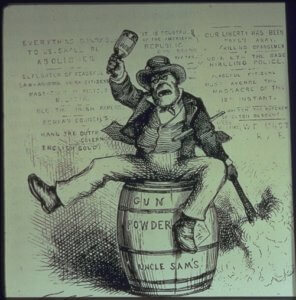
In this picture, an Irishman is sitting on top of a keg of gunpowder that he is about to light, swinging a bottle of whiskey. This is not a flattering picture of the Irish, and anti-Irish sentiments were especially strong in US history.
Social factors contributed to this characterization of Irish immigrants. Coming in large numbers at one time made the Irish easy targets for the ire of older US citizens. The Irish religious practice of Catholicism was seen as foreign to many Protestants. (The fact that JFK’s Catholicism was a controversial point nearly a century later should tell you something about the depth of anti-Catholic sentiment.)
What policies did the US pursue under the ideology of nativism?
There were many policies, both explicit and implicit; for the sake of brevity, I will highlight a few here. For more information, I recommend the essay “Cycles of Nativism” by University of Colorado – Boulder’s American Studies department.
-
The Second Great Awakening and Immigration: Driven by the religious fervor of the Second Great Awakening, Protestants went on a crusade against new immigrants from roughly the 1820s-1850s. Catholic immigrants were described as “Papists” who would never be loyal to the United States since their allegiance was to the Pope. This sentiment encouraged the development of the Nativist party (the “Know-Nothing” party) that experienced political victories on a national scale.
- Americanization Campaigns: As the search for labor continued with industrialization intensifying, more immigrants came from southern and eastern Europe. With these new immigrants came new bouts of nativism. In line with the Progressivism of the late 19th and early 20th century, nativists sought to “Americanize” these immigrants through public schooling and other state-run organizations.
- Chinese Exclusion Act: I have written at length about the Chinese Exclusion Act, a key piece of legislation that was rooted in nativist ideology.
Has nativism ever stopped in the United States?
No, but the influence it has on legislation has ebbed and flowed. For the APUSH exam, you are likely to see questions about certain specific periods of nativism (like the ones I highlighted above), but the ideology has never gone away. We can see that in trends regarding Mexican immigration, and immigrants and refugees from the Middle East.
What kinds of nativism APUSH questions will I be asked?
The following questions are taken from the Fall 2017 APUSH practice exam.
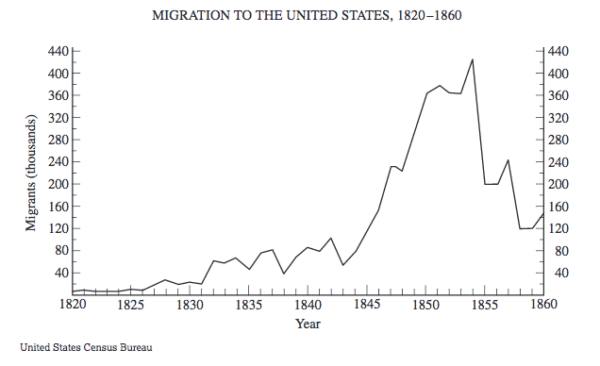
1. Which of the following was a significant cause of the trend from 1843 to 1854 shown in the graph?
A. Active encouragement of migration by the United States government
B. Economic and political difficulties in Germany and Ireland
C. Incentives offered by United States companies looking to hire skilled migrants
D. Adoption of free trade policies by European governments
2. Which of the following was a direct effect of the trend in immigration after 1845 shown on the graph?
A. An increase in sectional tensions
B. A major economic downturn
C. An upsurge in nativist sentiment
D. The collapse of the second party system
3. The main trend shown in the graph was most directly associated with which of the following processes occurring in the United States at the time?
A. The convergence of European and American cultures
B. The emergence of an industrialized economy
C. The displacement of American Indians from the Southeast
D. The resurgence of evangelical Protestantism
Correct Answers:
1. B. Economic and political difficulties in Germany and Ireland
2. C. An upsurge in nativist sentiment
3. B. The emergence of an industrialized economy



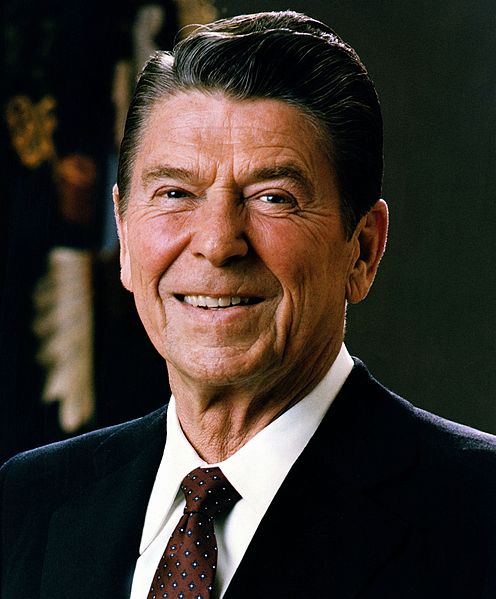
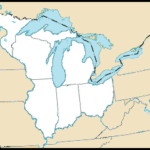
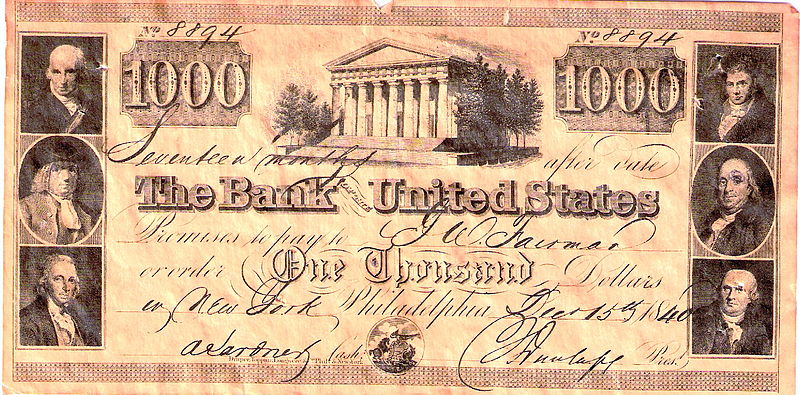
Leave a Reply